Today in Naval History - Naval / Maritime Events in History
6th of January
some of the events you will find here,
please use the following link where you will find more details and all other events of this day .....
1760 - HMS Mermaid (24), Cptn. James Hackman, wrecked off the Bahamas
HMS Mermaid was a 24-gun sixth-rate post ship of the Royal Navy, built in 1748-49, which served in the Seven Years' War.

1762 - HMS Venus (1758 - 32) Cptn. Thomas Harrison, took French Merchantman east indiaman 'Le Boullongne' (1758 - 26).
From: The Gentleman's magazine. v. 32 (1762).
Capt. Harrison of the Venus frigate, brought into Plymouth, the Boulogne from the Isle of France, laden with coffee and pepper, M. de St. Romaine, commander. She was taken after an hours engagement, in which time she had 7 men killed and 20 wounded. She had been about 3 months from the Isle of France and left M. de Apobe's squadron there.

1783 – Launch of HMS Dictator, a 64-gun Inflexible-class third-rate ship of the line of the Royal Navy, at Limehouse.
HMS Dictator was a 64-gun third-rate ship of the line of the Royal Navy, launched on 6 January 1783 at Limehouse. She was converted into a troopship in 1798, and broken up in 1817

1801 - Boats of HMS Mercury (1779 - 28), Cptn. T. Rogers, captured French convoy of fifteen sail.
HMS Mercury was a 28-gun Enterprise-class sixth-rate frigate of the Royal Navy. She was built during the American War of Independence and serving during the later years of that conflict. She continued to serve during the years of peace and had an active career during the French Revolutionary Wars and most of the Napoleonic Wars, until being broken up in 1814.

1806 - HMS Favourite (16), Cdr. John Davie, captured by French squadron under Cptn. L'Hermite off Cape de Verd Islands
HMS Favourite (or Favorite) was a 16-gun Cormorant-class sloop of the Royal Navy, launched in 1794 at Rotherhithe. The French captured her in 1806 and renamed her Favorite. However, the British recaptured her in 1807 and renamed her HMS Goree. She became a prison ship in 1810 and was broken up in Bermuda in 1817.

1901 – Launch of SMS Wettin ("His Majesty's Ship Wettin"), a pre-dreadnought battleship of the Wittelsbach class of the German Kaiserliche Marine (Imperial Navy).
SMS Wettin ("His Majesty's Ship Wettin")[a] was a pre-dreadnought battleship of the Wittelsbach class of the German Kaiserliche Marine (Imperial Navy). She was built by Schichau Seebeckwerft in Danzig. Wettin was laid down in October 1899, and was completed October 1902. She and her sister ships—Wittelsbach, Zähringen, Schwaben and Mecklenburg—were the first capital ships built under the Navy Law of 1898. Wettin was armed with a main battery of four 24 cm (9.4 in) guns and had a top speed of 18 knots (33 km/h; 21 mph).

1941 - Operation Excess begun
Operation Excess was a series of British supply convoys to Malta, Alexandria and Greece in January 1941. The operation encountered the first presence of Luftwaffe anti-shipping aircraft in the Mediterranean Sea. All the convoyed freighters reached their destinations. However, the destroyer Gallant was disabled by Italian mines; and Axis bombers severely damaged the cruiser Southampton and the aircraft carrier Illustrious.

1945 - Invasion of Lingayen Gulf
The Invasion of Lingayen Gulf (Filipino: Paglusob sa Golfo ng Lingayen), 6–9 January 1945, was an Allied amphibious operation in the Philippines during World War II. In the early morning of 6 January 1945, a large Allied force commanded by Admiral Jesse B. Oldendorf began approaching the shores of Lingayen. U.S. Navy and Royal Australian Navy warships began bombarding suspected Japanese positions along the coast of Lingayen from their position in Lingayen Gulf for three days. On 9 January, the U.S. 6th Army landed on a 20 mi (32 km) beachhead between the towns of Lingayen and San Fabian.

The U.S. Navy battleship USS Pennsylvania (BB-38) leading USS Colorado (BB-45) and the cruisers USS Louisville (CA-28), USS Portland (CA-33), and USS Columbia (CL-56) into Lingayen Gulf, Philippines, in January 1945.
1962 - The french shipyard Chantiers de l'Atlantique delivered the longest passenger ship of the world, the SS France, to the new owner French line Compagnie Générale Transatlantique
SS France was a Compagnie Générale Transatlantique (CGT, or French Line) ocean liner, constructed by the Chantiers de l'Atlantique shipyard at Saint-Nazaire, France, and put into service in February 1962. At the time of her construction in 1960, the 316 m (1,037 ft) vessel was the longest passenger ship ever built, a record that remained unchallenged until the construction of the 345 m (1,132 ft) RMS Queen Mary 2 in 2004.

6th of January
some of the events you will find here,
please use the following link where you will find more details and all other events of this day .....
Naval/Maritime History - 27th of August - Today in Naval History - Naval / Maritime Events in History
Today in Naval History - Naval / Maritime Events in History 5 January 1798 - HMS Pomone (44), Cptn. Robert Carthew Reynolds, sank privateer Cheri (26), Cptn. Chassin, off Ushant On 5 January, HMS Pomone was 94 leagues off Ushant when she encountered a large ship which she pursued. In the haze...
shipsofscale.com
1760 - HMS Mermaid (24), Cptn. James Hackman, wrecked off the Bahamas
HMS Mermaid was a 24-gun sixth-rate post ship of the Royal Navy, built in 1748-49, which served in the Seven Years' War.
1762 - HMS Venus (1758 - 32) Cptn. Thomas Harrison, took French Merchantman east indiaman 'Le Boullongne' (1758 - 26).
From: The Gentleman's magazine. v. 32 (1762).
Capt. Harrison of the Venus frigate, brought into Plymouth, the Boulogne from the Isle of France, laden with coffee and pepper, M. de St. Romaine, commander. She was taken after an hours engagement, in which time she had 7 men killed and 20 wounded. She had been about 3 months from the Isle of France and left M. de Apobe's squadron there.
1783 – Launch of HMS Dictator, a 64-gun Inflexible-class third-rate ship of the line of the Royal Navy, at Limehouse.
HMS Dictator was a 64-gun third-rate ship of the line of the Royal Navy, launched on 6 January 1783 at Limehouse. She was converted into a troopship in 1798, and broken up in 1817
1801 - Boats of HMS Mercury (1779 - 28), Cptn. T. Rogers, captured French convoy of fifteen sail.
HMS Mercury was a 28-gun Enterprise-class sixth-rate frigate of the Royal Navy. She was built during the American War of Independence and serving during the later years of that conflict. She continued to serve during the years of peace and had an active career during the French Revolutionary Wars and most of the Napoleonic Wars, until being broken up in 1814.
1806 - HMS Favourite (16), Cdr. John Davie, captured by French squadron under Cptn. L'Hermite off Cape de Verd Islands
HMS Favourite (or Favorite) was a 16-gun Cormorant-class sloop of the Royal Navy, launched in 1794 at Rotherhithe. The French captured her in 1806 and renamed her Favorite. However, the British recaptured her in 1807 and renamed her HMS Goree. She became a prison ship in 1810 and was broken up in Bermuda in 1817.
1901 – Launch of SMS Wettin ("His Majesty's Ship Wettin"), a pre-dreadnought battleship of the Wittelsbach class of the German Kaiserliche Marine (Imperial Navy).
SMS Wettin ("His Majesty's Ship Wettin")[a] was a pre-dreadnought battleship of the Wittelsbach class of the German Kaiserliche Marine (Imperial Navy). She was built by Schichau Seebeckwerft in Danzig. Wettin was laid down in October 1899, and was completed October 1902. She and her sister ships—Wittelsbach, Zähringen, Schwaben and Mecklenburg—were the first capital ships built under the Navy Law of 1898. Wettin was armed with a main battery of four 24 cm (9.4 in) guns and had a top speed of 18 knots (33 km/h; 21 mph).
1941 - Operation Excess begun
Operation Excess was a series of British supply convoys to Malta, Alexandria and Greece in January 1941. The operation encountered the first presence of Luftwaffe anti-shipping aircraft in the Mediterranean Sea. All the convoyed freighters reached their destinations. However, the destroyer Gallant was disabled by Italian mines; and Axis bombers severely damaged the cruiser Southampton and the aircraft carrier Illustrious.
1945 - Invasion of Lingayen Gulf
The Invasion of Lingayen Gulf (Filipino: Paglusob sa Golfo ng Lingayen), 6–9 January 1945, was an Allied amphibious operation in the Philippines during World War II. In the early morning of 6 January 1945, a large Allied force commanded by Admiral Jesse B. Oldendorf began approaching the shores of Lingayen. U.S. Navy and Royal Australian Navy warships began bombarding suspected Japanese positions along the coast of Lingayen from their position in Lingayen Gulf for three days. On 9 January, the U.S. 6th Army landed on a 20 mi (32 km) beachhead between the towns of Lingayen and San Fabian.
The U.S. Navy battleship USS Pennsylvania (BB-38) leading USS Colorado (BB-45) and the cruisers USS Louisville (CA-28), USS Portland (CA-33), and USS Columbia (CL-56) into Lingayen Gulf, Philippines, in January 1945.
1962 - The french shipyard Chantiers de l'Atlantique delivered the longest passenger ship of the world, the SS France, to the new owner French line Compagnie Générale Transatlantique
SS France was a Compagnie Générale Transatlantique (CGT, or French Line) ocean liner, constructed by the Chantiers de l'Atlantique shipyard at Saint-Nazaire, France, and put into service in February 1962. At the time of her construction in 1960, the 316 m (1,037 ft) vessel was the longest passenger ship ever built, a record that remained unchallenged until the construction of the 345 m (1,132 ft) RMS Queen Mary 2 in 2004.




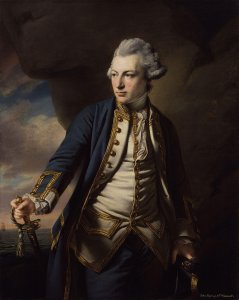
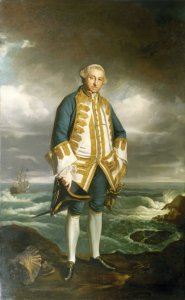

 ed in Manila Bay, Cooke pretended that his ships were French vessels and successfully lured successive boatloads of Spanish officials aboard, taking them prisoner in turn. Once he had determined from his captives the state of defences in Manila, that the treasure ship had been unloaded at Cavite and that the Spanish squadron was undergoing extensive repairs and thus unavailable for operations, he sent a raiding party against a squadron of gunboats in the mouth of the Pasig River. Capturing the gunboats in a bloodless attack, Cooke then released his prisoners and sailed southwards, unsuccessfully assaulting Zamboanga before returning to Macau.
ed in Manila Bay, Cooke pretended that his ships were French vessels and successfully lured successive boatloads of Spanish officials aboard, taking them prisoner in turn. Once he had determined from his captives the state of defences in Manila, that the treasure ship had been unloaded at Cavite and that the Spanish squadron was undergoing extensive repairs and thus unavailable for operations, he sent a raiding party against a squadron of gunboats in the mouth of the Pasig River. Capturing the gunboats in a bloodless attack, Cooke then released his prisoners and sailed southwards, unsuccessfully assaulting Zamboanga before returning to Macau.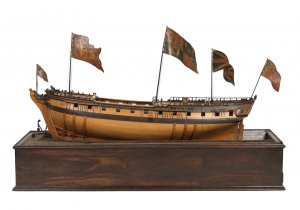
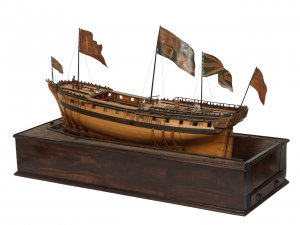
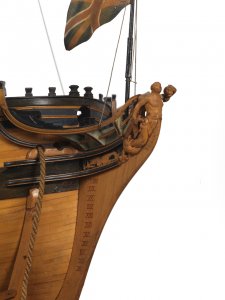
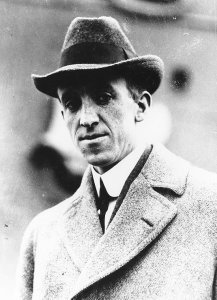


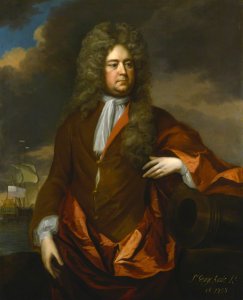
 Ship Building & Drydock Co.
Ship Building & Drydock Co.